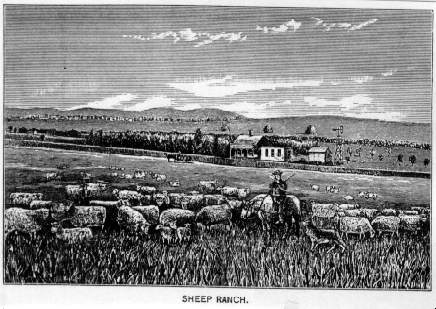
My 2nd great grandfather, Andrew Storer, must have had wanderlust in his soul. Born in Maine in 1817, he would settle in seven different territories and “infant” states before he died in 1895. He would work in a brickyard, operate a sawmill, work on the Erie Canal and Mississippi River, and own a farm. His name can be found on cash sales of land in newly settled territories and on Homestead Act documents. He was active in local government councils wherever he settled.
The 1880 Federal Census contains a Schedule 3, an agricultural record. By that year, Andrew would be settled in his last home in Osborne County, Kansas. He had moved there in 1871 so this schedule measures nine years of his success in settling on the plains. I had wondered what his farm was like…this schedule would complete the picture for me. That year, he reported that his farm and buildings were worth $5,000 while his livestock were valued at over $4,600. His sheep herd was comprised of 1,100 sheep that had yielded over 4 tons of fleece that year. He had 400 lambs with five being killed by dogs. In addition, he had 16 swine…two of his pigs had traveled all the way from Iowa when the family came by wagon train. Also of importance on the farm were 40 acres of forest trees. At that time, trees were still scarce on the plains. The Kansas Department of Agriculture asked farmers to devote lands to the cultivation of trees. Andrew was known for caring for hearty cottonwood and walnut trees. In total, Andrew answered 100 questions about his farm. (A copy of the schedule form can be found at https://www.archives.gov/files/research/genealogy/charts-forms/1880-agricultural.pdf .)
Many of our ancestors were farmers. The U.S. government recorded agricultural statistics from 1850-1900 on these non-population schedules. These records promise to cultivate and produce glimpses into the lives of those ancestors. What seeds will be planted into the quest for ancestral findings when one reads them?
Postscript: those two pigs were also famous for something else…they were the first pigs brought to Osborne County, Kansas. Never underestimate the value of a porker.

How’d you find out about those premier pigs? Newspaper research?
LikeLike
You are right…newspaper research…Osborne County Farmer. Andrew’s son was interviewed in 1930 about his father’s farm, and he mentioned the pigs as he had come to Kansas with his parents. In another article about county firsts, Andrew’s famous pigs were determined to be the first in the county.
LikeLiked by 1 person
Nice!
LikeLike